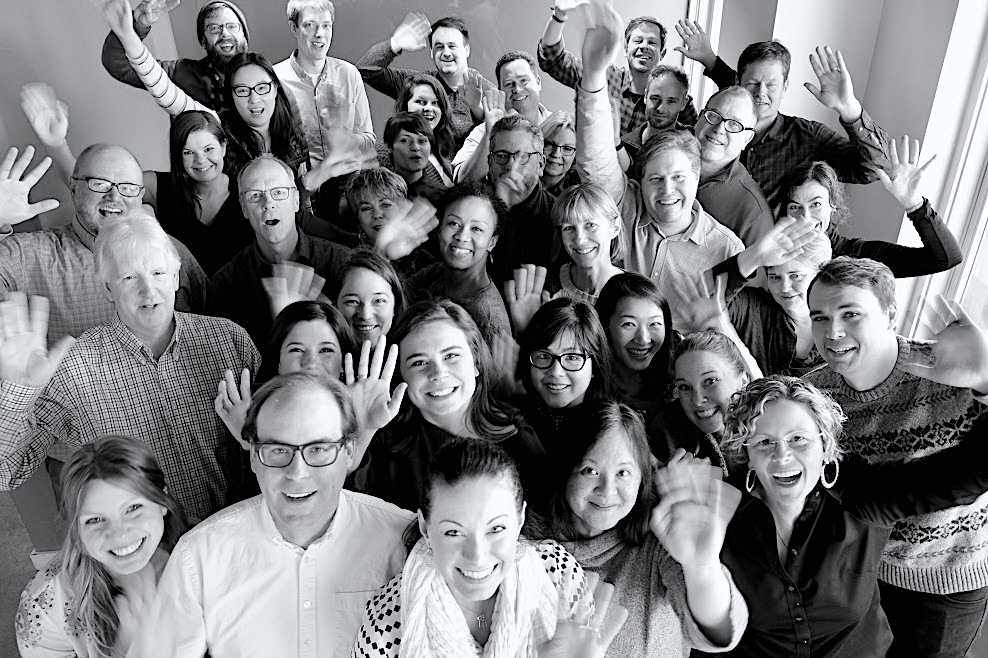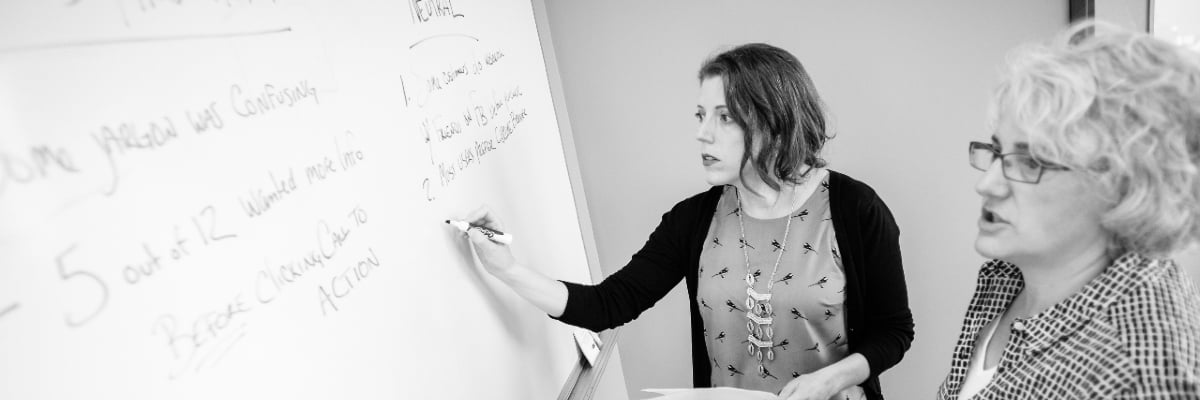
By
Trista Meehan
One of the important aspects of customer research is talking about the observations with clients afterwards—what worked well, what didn’t, as well as “ah-ha” moments that generate lively discussions and ultimately innovation. Ideally these discussions should happen throughout the research project. However, it’s helpful to set aside some time to talk about the themes that surfaced after all the research sessions are complete but before the final presentation.
In my prior role as a researcher for USAA, we were required to schedule a debrief meeting with a project team after completing the user sessions. I quickly became a convert of the client debrief. I’ve since found that a semi-structured meeting—usually 60 minutes to two hours—to talk about what we saw and heard in our research sessions is a game-changer. It’s been especially helpful at Blink since we often conduct research on products and customer segments we may not be entirely familiar with.
Value of the client debrief
Below are five reasons to hold a debrief meeting with a client (internal or external) the next day—or immediately—after all the research sessions are complete.
- Debrief meetings allow the core team to reach consensus on what was heard and observed in research sessions. While we researchers like to think we’re pretty smart (OK, we are!), we simply can’t know each product and context fully. Talking about the data with the team helps uncover points that may be misinterpreted by the researcher or team members; we’re able to clear up misunderstandings or identify gaps in our notes. Sometimes the discussion helps us reach consensus on a particularly ambiguous issue or data point.
- Expert observers often pick up relevant insights that might be missed by the research facilitator. This is especially important if the researcher is not embedded within the project team; the team has a deep collective knowledge of the product or service and may notice unique issues because of this expertise. When we collaborate with our clients in the findings stage of research, we are further educated about the product or service and the resulting findings are more insightful.
- Discussing the findings in their raw form can help guide the final reporting. Having a conversation with the client after the study sessions allows the researcher to gauge the client’s assessment of the sessions; while this doesn’t change the data, it’s helpful to understand which facts may need further exploration or prioritization. Also, it can serve as a guide for how you might best structure a report or presentation for the team, including executives who may not be involved in the day-to-day minutia of a project.
- It narrows the scope of the reported findings. While major usability issues—showstoppers—will be reported regardless, we simply don’t have time to give recommendations on every issue uncovered in research sessions. The debrief meeting allows the researcher to gauge which issues are important (and actionable) to the team.
- Coming up with a “quick and dirty” list of results allows the development team to move forward and start fixing known issues. This can be critical, especially for teams working within agile/lean cycles. Often reports and presentations—which can take days or weeks to deliver—are helpful to managers and executives; meanwhile the development team is chomping at the bit to solve the problems discovered in research sessions. The debrief meeting should provide the development team a quick high-level takeaway so they’re able to move forward and meet their deadlines.
In Part 2 we’ll explore the nuts and bolts of a successful client debrief meeting—including how to avoid common pitfalls—so you and your clients can reap the benefits of this valuable user research tool.
Trista is a member of the research team at Blink. In her free time, she likes to compose silly ditties on the ukulele and scour Seattle’s thrift stores for vintage clothes and vinyl records.



